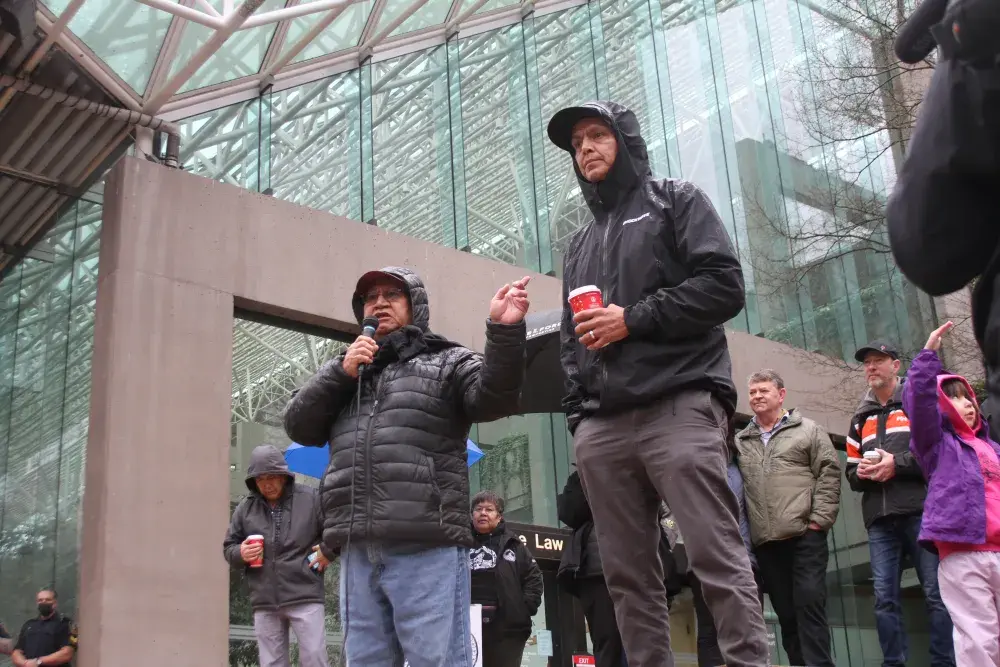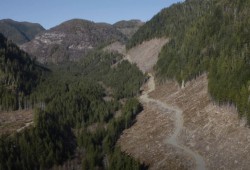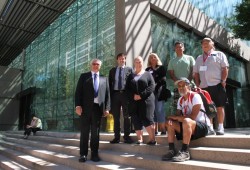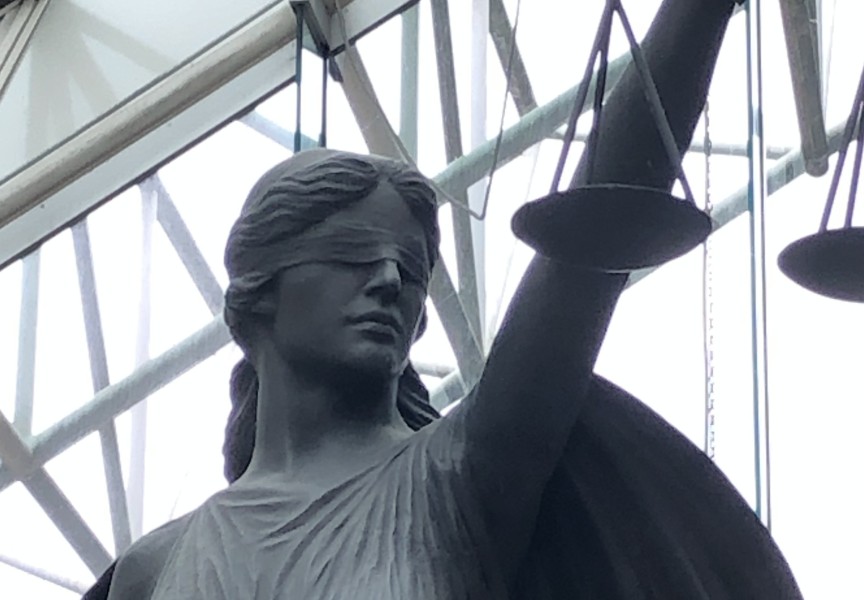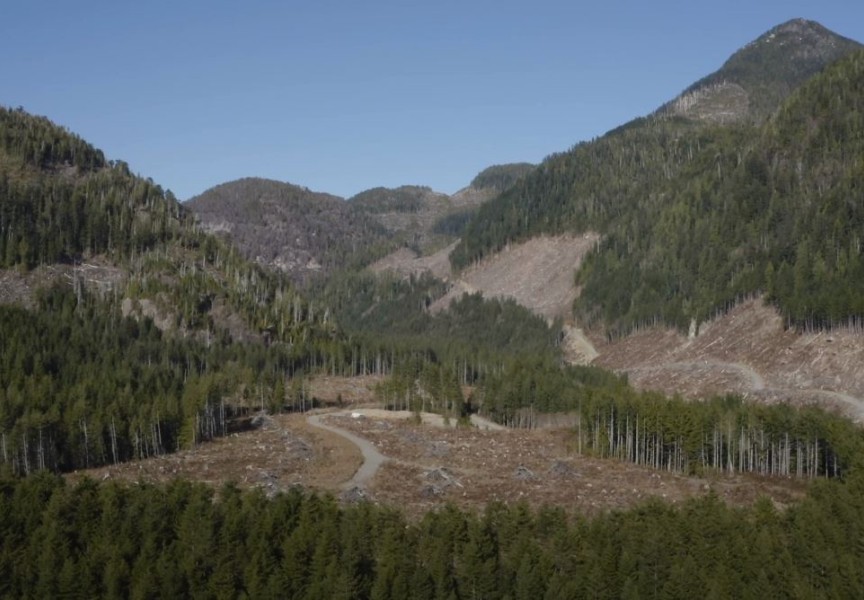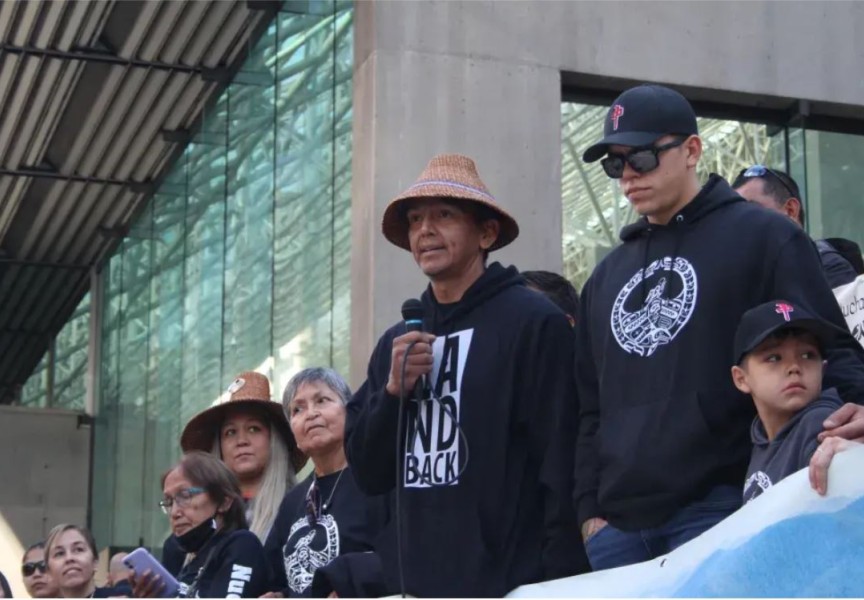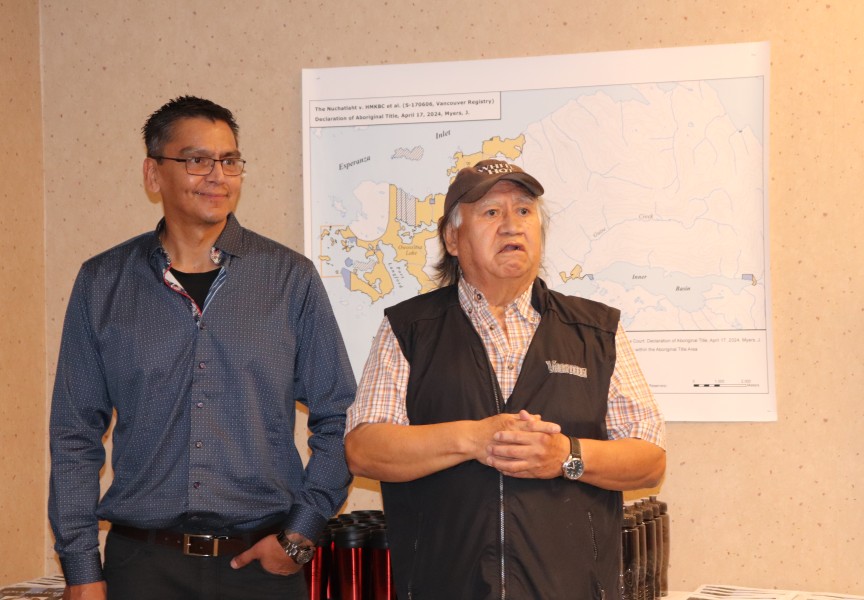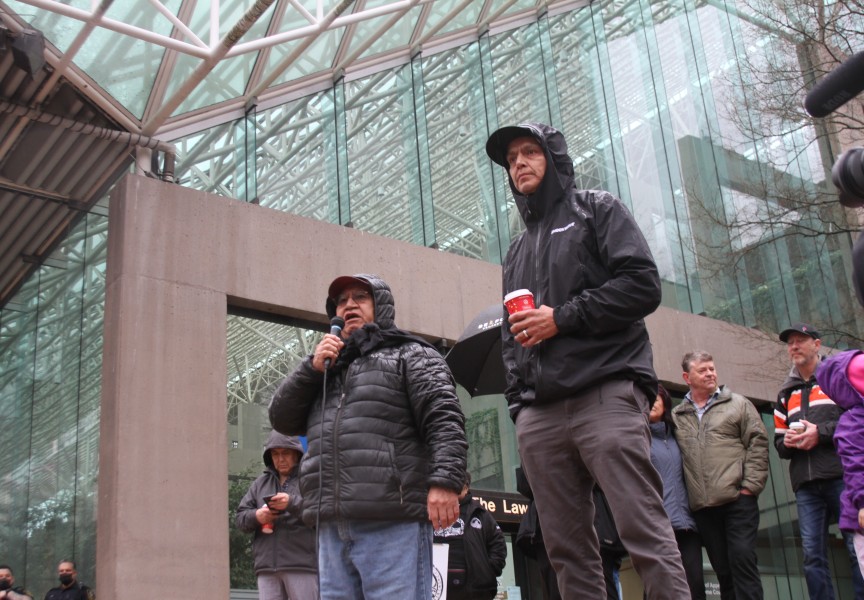The Nuchatlaht were back in court on Dec. 11, as the small First Nation seeks Aboriginal title over its territory on the northern part of Nootka Island.
Nearly seven years since first filing the title claim to the B.C. Supreme Court in early 2017, the Nuchatlaht and their legal team appeared before Justice Elliot Myers for a hearing to help determine the future path of the case.
In May Myers released a decision on the Nuchatlaht’s claim over the approximately 20,000 hectares off the northwest coast of Vancouver Island. The judge determined that the First Nation’s members are the historical and rightful owners of the claim area – but not all of it. He noted that the only “direct evidence” of historical habitation lies in the vicinity of village sites near the coast.
Since they last came before the judge in August, the Nuchatlaht have made two applications to further the case. One option is to prove title over certain sections of the claim area by reexamining evidence that has already been filed to the court. In preparation for this route the First Nation’s legal team has prepared 45-50 maps indicating different areas of historical occupation.
“We have prepared those maps and are ready to present them on Monday,” said Owen Stewart from the Nuchatlaht’s legal team before the court hearing. “Whether we get to that or not, we’re not sure.”
The hearing was scheduled for four days, but it only took three quarters of the Monday to determine the next phase of the case. The Nuchatlaht’s application to prove title for certain sections of their territory was accepted by the court. This means that during the next court hearing, which is scheduled for five days starting March 11, 2024, the Nuchatlaht’s legal team will present further argument to define certain sections of the claim area.
“This is a process of now fighting about, okay, what are the smaller areas that Nuchatlaht have won title to?” explained Stewart. “The court is really hesitant to draw their own line, they need one of the parties to draw it for them. This is that process.”
It remains to be seen if the court will accept another application for the Nuchatlaht to gather further evidence to prove Aboriginal title over the entire area they have claimed. This entails reopening the case for more evidence, a process that could take years. It would involve more archaeological studies of the claim area, in which surveyors drill into culturally modified trees to date when they were altered by Nuchatlaht’s ancestors.
In evidence already presented to the court, archaeologist Jacob Earnshaw has identified 8,386 culturally modified trees in the claim area, with an average distance of 845 metres from the shore.
Stewart said that the First Nation has been doing more of this sort of archaeological work as it awaits the next phase of the title case.
“Archaeological surveys have been taking place,” he said. “One of the comments in the decision is that none of these surveys were done with permits. We couldn’t test anything, we couldn’t stick an auger in a tree, count the rings and tell you how old the CMT was. We’ve got that permit now. We’re ready to put our foot on the gas if the court lets us.”
Reopening the case for more evidence could also involve the examination of audio tapes currently in the Royal B.C. Museum’s collection in Victoria. This presents a time-consuming process for the Nuchatlaht, as these recordings of the First Nation’s elders require translation and transcribing.
“If that’s what it takes, my client has instructed me to do that,” said Jack Woodward, who leads the Nuchatlaht legal team, as he appeared before Myers in August.
The Nuchatlaht have relied on the precedent of the Tsilhqot’in case, a 2014 ruling from the Supreme Court of Canada. Woodward was part of the legal team that fought for this recognition of the central B.C. First Nation’s aboriginal title, which sets the exclusive and continued occupation of an area as the legal test. Although Myers determined that a Nuchatlaht confederacy used the claim area when the British Crown asserted sovereignty in 1846, he cited an inherent problem with relying on the Tsilhqot’in case as a precedent “given the marine orientation of the culture”.
“[T]here will probably not be trails between one coastal location and another, given that the means of transport was primarily by canoe,” wrote the judge in his decision from this spring.
“This is quite a bit different than the Tsilhqot’in case,” added Myers while in court in August.
This is the first aboriginal title case since the province passed the Declaration of Indigenous Peoples Act in 2019. In alignment with an international declaration from the United Nations, this legislation passed into law the recognition of ancestral lands that First Nations occupied before contact with Europeans. But as is being proven by the lengthy court process, getting the province to legally recognize a First Nation’s territory can bring a drawn-out battle.
“We can’t just have big general descriptions of these things,” said the province’s lawyer Jeff Echols while in court with the Nuchatlaht in August. “Their argument was that there was one territory owned by one group. The evidence didn’t support that.”
With less than 170 members, the years of fighting for title has put a large financial burden on the Nuchatlaht.
“We’re committed to fighting it all the way,” said Councillor Archie Little. “We know that it’s costly, it’s very costly, but we believe in who we are and we’re going to prove to them that we are right.”

